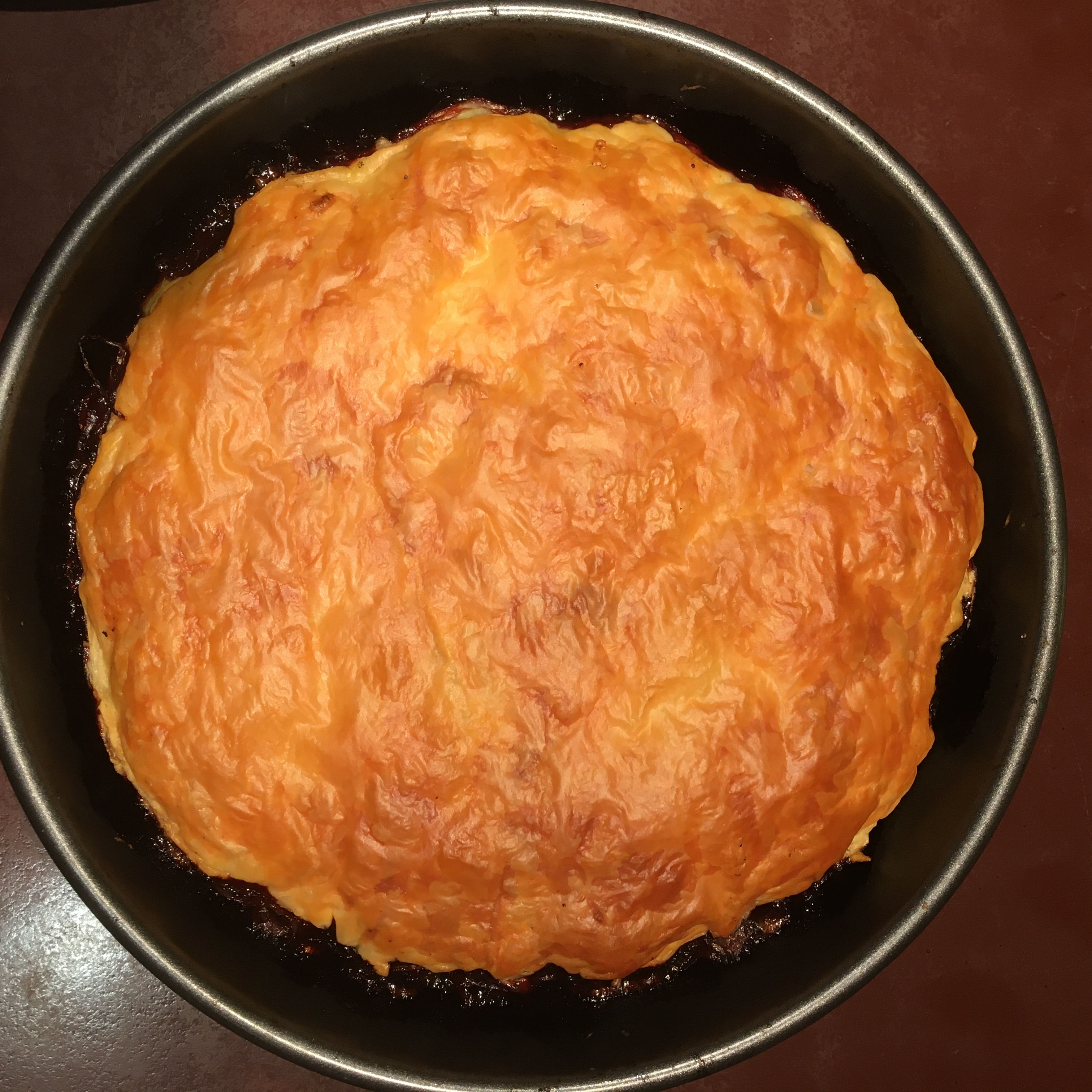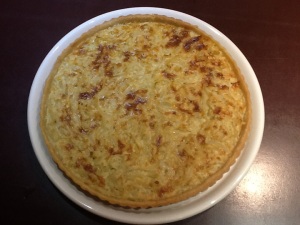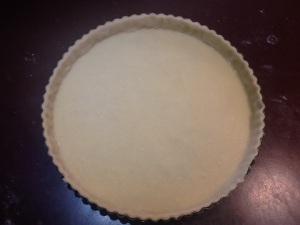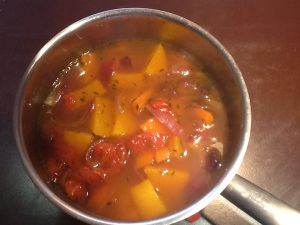My niece came to stay this weekend, and we cooked this delicious vegetable tagine together. Aside from onion and carrot the selection of vegetables was far from authentic, as I used winter vegetables – sweet potato, parsnip and swede – but the result was just as tasty as tagines featuring mediterranean vegetables. My niece had seconds, so I think it has the seal of approval!

I used red onion, but regular yellow onion would be just fine. These quantities serve 4 generously and I didn’t use all of the swede pictured. You can easily up the quanties, remembering to increase the amount of spices, to serve more people or make sure you have leftovers for tomorrow’s lunchbox. Having browsed a number of different recipes online and in my cookbooks, I decided that the important things were to soften the onions and cook the spices slowly at the beginning, then turn the chopped vegetables in the spicy onions, and finally add the liquid and chickpeas. You could add crushed chillies or a fresh chopped chilli with the rest of the spices at the beginning instead of using paprika.
Rather than serving the vegetable tagine with couscous, we had brown rice, which made it a really satisfying meal. To thicken the sauce – and up the protein content, particularly useful if you are vegan – you could add 100g red lentils just before adding the stock.
- 1 large red onion
- 1 tbsp rapeseed oil (or similar neutral oil)
- 2 cloves garlic
- 1 thumb of root ginger
- ½ tsp ground cumin
- ½ tsp cinnamon
- ½ tsp ground coriander
- ¼ tsp paprika
- 2 carrots
- 1 large sweet potato
- 2 parsnips
- 1 small swede
- ½ tin chopped tomatoes
- 600 ml vegetable stock
- Large pinch saffron
- 8 soft dried apricots
- zest and juice of ½ orange
- 400g can of chickpeas
- 1 red chilli or 1 tsp harissa
- a handful of coriander leaves
- To serve: brown rice or couscous with 50g pine nuts to garnish
Start by peeling and chopping the onion, crushing the garlic and peeling and finely chopping the ginger. Heat the oil in a heavy-bottomed casserole or pan with a lid, large enough to take all the vegetables comfortably. Peel and chop the carrot, sweet potato, swede and parsnip into even, fork-sized chunks.
When the oil is hot, cook the chopped onion, stirring from time to time, for about 5 minutes until it is starting to soften. Add the garlic and ginger, and cook for another couple of minutes before tipping in the cumin, cinnamon, coriander and paprika. Stir for a few minutes until the scent of the spices rises.
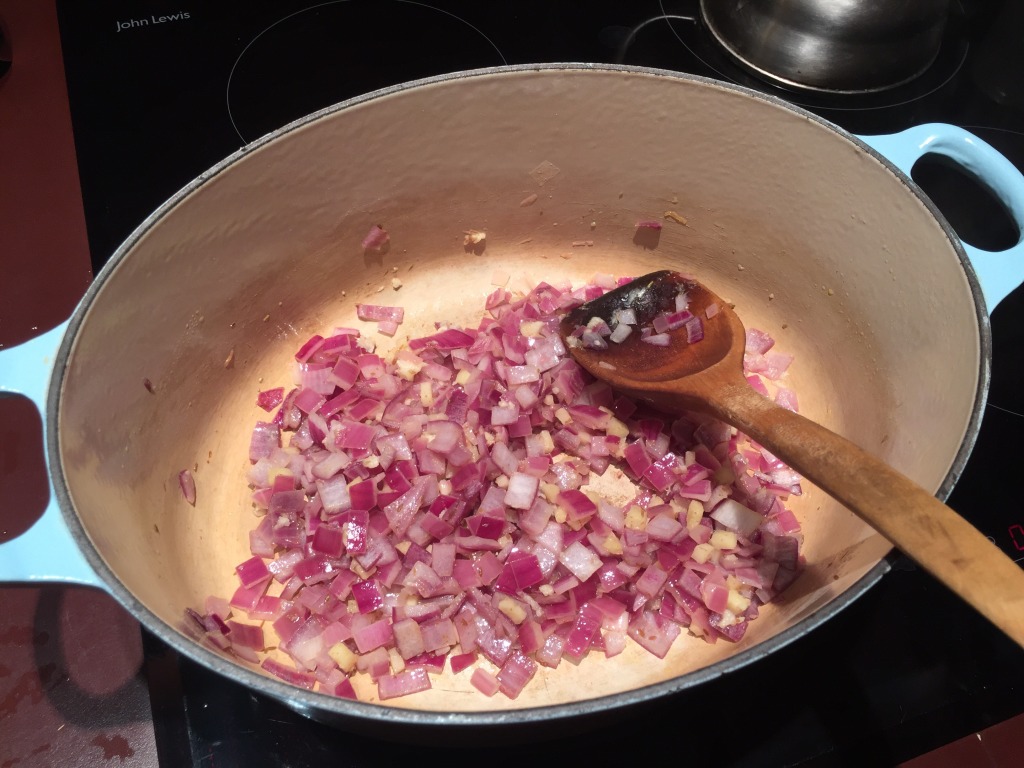
Add the rest of the vegetables and stir them about in the spicy onions – this is where you’ll be glad that you chose a nice large pan! Then stir in the tomatoes. Heat the stock, or make up from 1 rounded tsp of Marigold vegan bouillon powder and boiling water. Add the saffron to the stock and pour into the pan. Finally, chop the dried apricots into quarters, and add them to the pan together with the orange zest and juice and drained chickpeas.
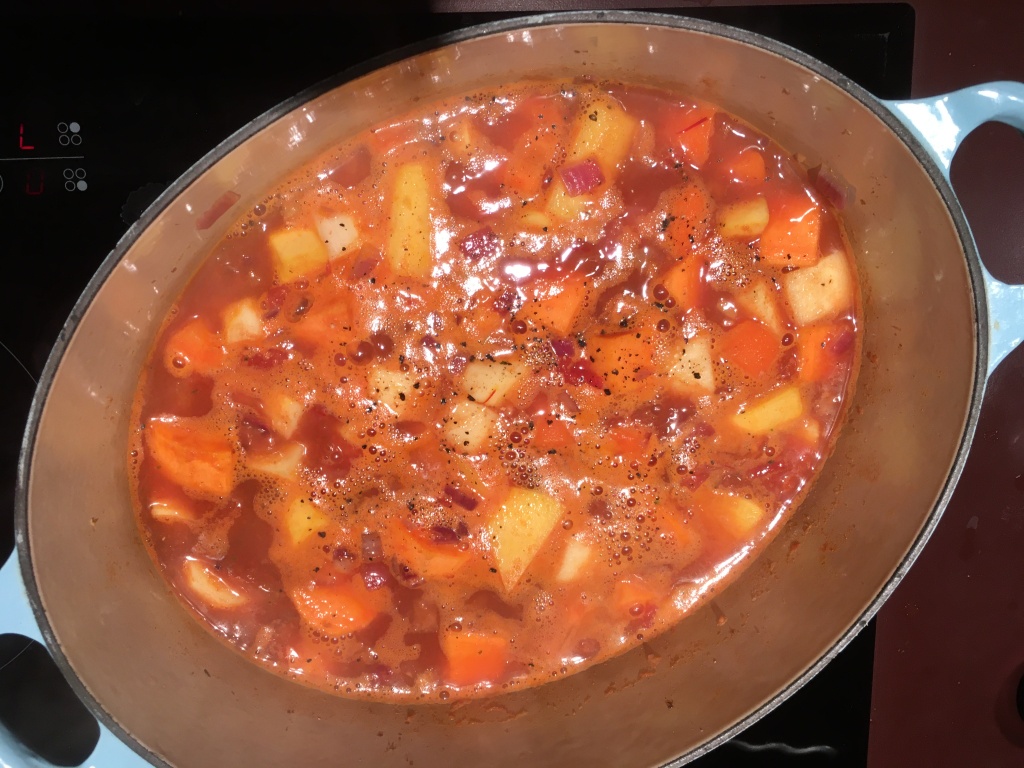
Bring to the boil and simmer for 20-30 minutes until the vegetables are tender. Put on the rice or couscous and we toasted some pine nuts to sprinkle over the rice. Once the tagine is cooked, stir in the harissa, if using. Serve with the rice or couscous, and garnish with chopped coriander and sliced red chilli, if wished.
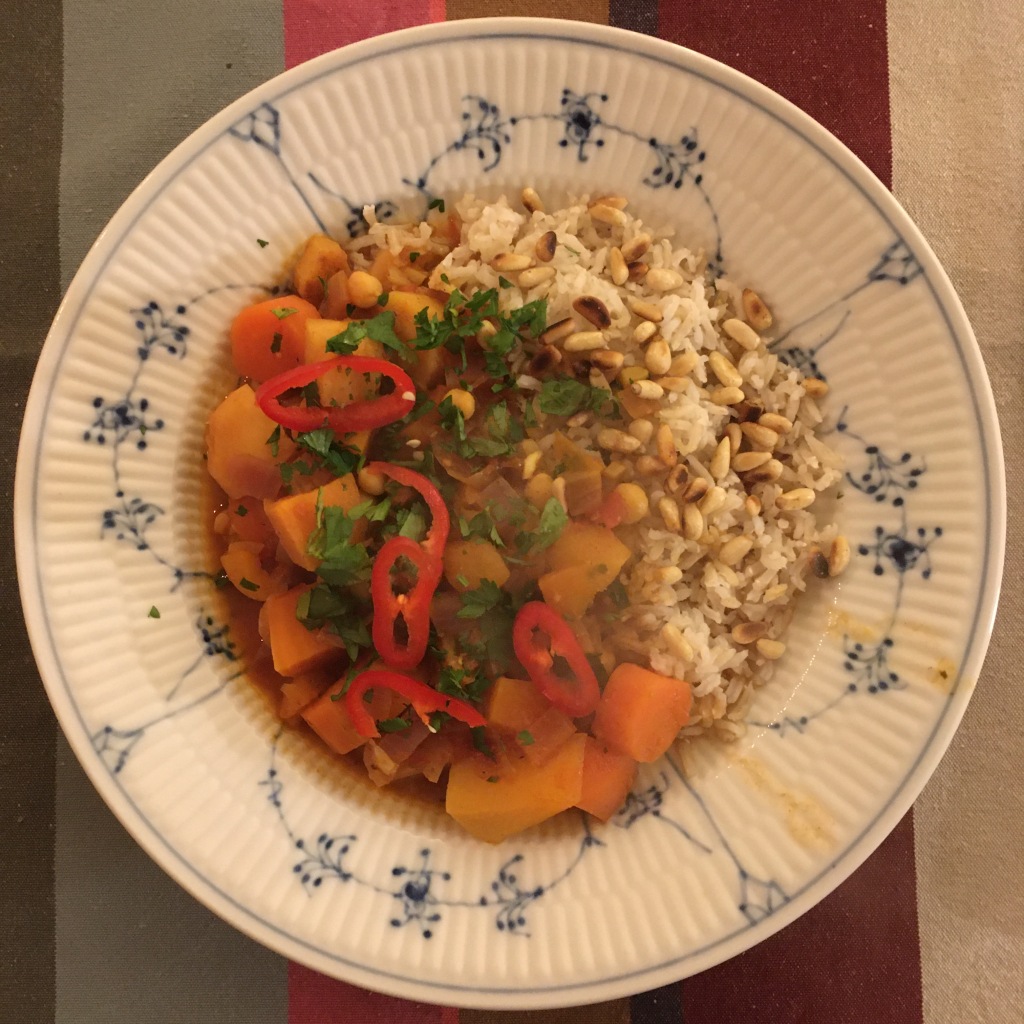



 Unroll the sheet of puff pastry, upend the baking tin on it, and cut a piece 1 cm larger than the tin. I needed to roll the pastry a bit to get it to the right shape, and I should have allowed a bigger rim to tuck in (as you can see, it was not 1 cm larger than the tin). Re-wrap the pastry and put it back in the fridge in its bag. Line the baking tin with greaseproof paper. Heat the oven to 180°F fan/200°F/Gas 6.
Unroll the sheet of puff pastry, upend the baking tin on it, and cut a piece 1 cm larger than the tin. I needed to roll the pastry a bit to get it to the right shape, and I should have allowed a bigger rim to tuck in (as you can see, it was not 1 cm larger than the tin). Re-wrap the pastry and put it back in the fridge in its bag. Line the baking tin with greaseproof paper. Heat the oven to 180°F fan/200°F/Gas 6. Now arrange the beetroot wedges on their sides in a circle around the edge of the tin, fitting them snugly together (mine could have been closer together) and fill the centre with a few of the smaller pieces. Put into the pre-warmed oven and cook for 30-40 minutes until a knife goes through them, remembering that they are going to get cooked a bit more later. If you have any beetroot left over (I did) just tip them into a separate baking pan, cover with foil and pop them in the oven at the same time. They will make a lovely beetroot salad with watercress, chicory and sliced orange.
Now arrange the beetroot wedges on their sides in a circle around the edge of the tin, fitting them snugly together (mine could have been closer together) and fill the centre with a few of the smaller pieces. Put into the pre-warmed oven and cook for 30-40 minutes until a knife goes through them, remembering that they are going to get cooked a bit more later. If you have any beetroot left over (I did) just tip them into a separate baking pan, cover with foil and pop them in the oven at the same time. They will make a lovely beetroot salad with watercress, chicory and sliced orange.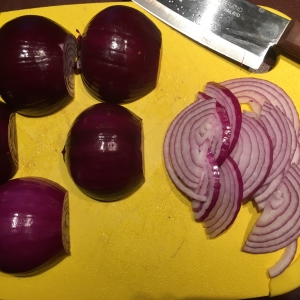 Peel the onions and slice fairly finely. Heat the remaining 2 tbsps oil over a medium heat in a large frying pan with a lid.
Peel the onions and slice fairly finely. Heat the remaining 2 tbsps oil over a medium heat in a large frying pan with a lid.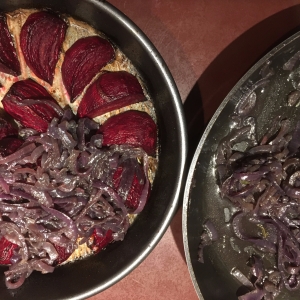 When the beetroot is ready spoon the onions over them, filling any gaps between the wedges to give a relatively smooth surface. Carefully unroll the pastry over the top and tuck the edges down over the filling.
When the beetroot is ready spoon the onions over them, filling any gaps between the wedges to give a relatively smooth surface. Carefully unroll the pastry over the top and tuck the edges down over the filling.